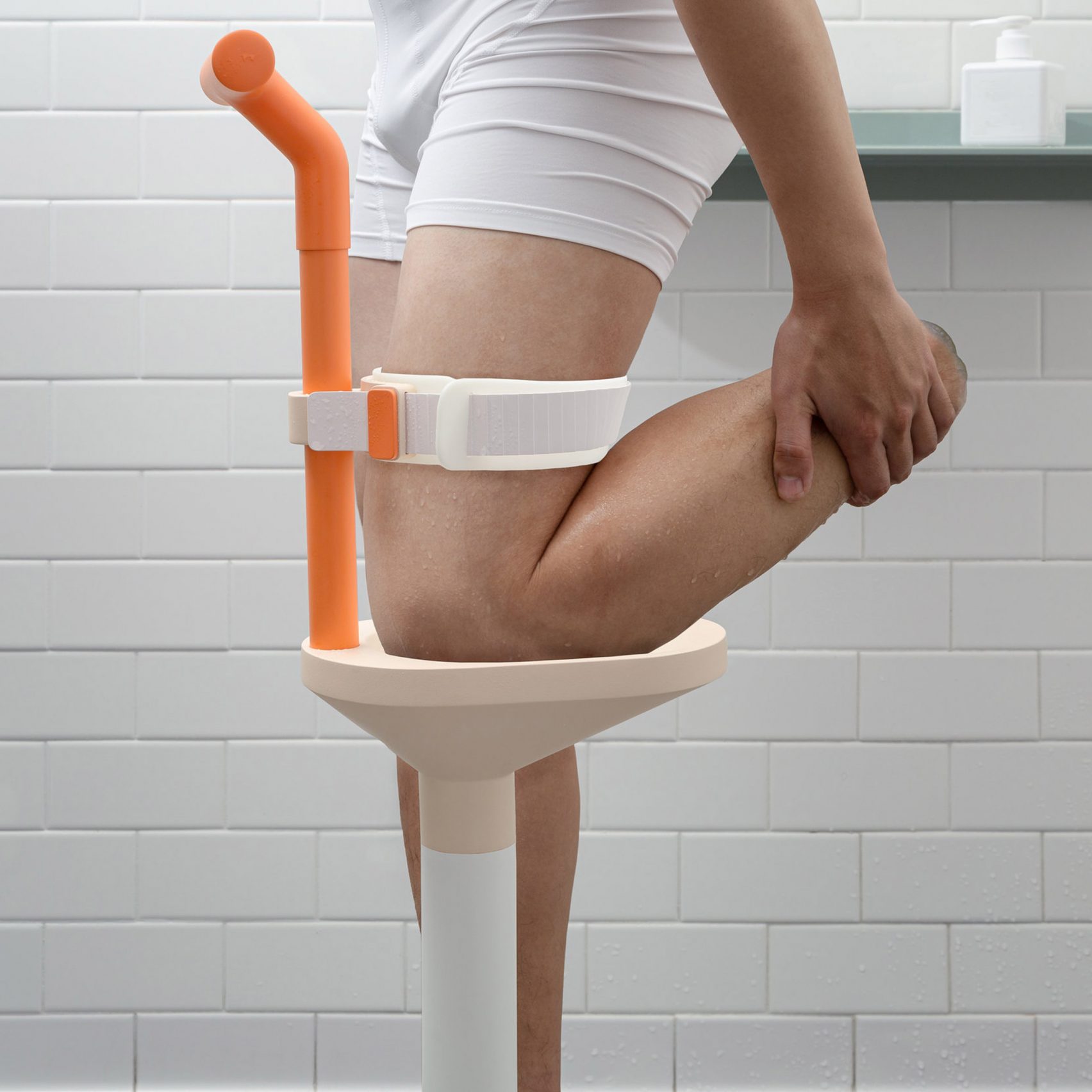
Interchangeable modular components eliminate the need for expensive custom building in the Lytra lower-limb prosthesis, created by industrial designer Harry Teng to offer amputees a safe, low-cost standing aid in the shower.
The artificial leg consists of a height-adjustable pole with an added hand-grip for stability and a customisable socket where users can rest their residual limb.
Lytra was designed to bridge the gap between traditional prostheses, which are expensive and generally not waterproof, and bathroom aids such as wall grips and shower stools that don't help users with the most treacherous step – getting into the shower.
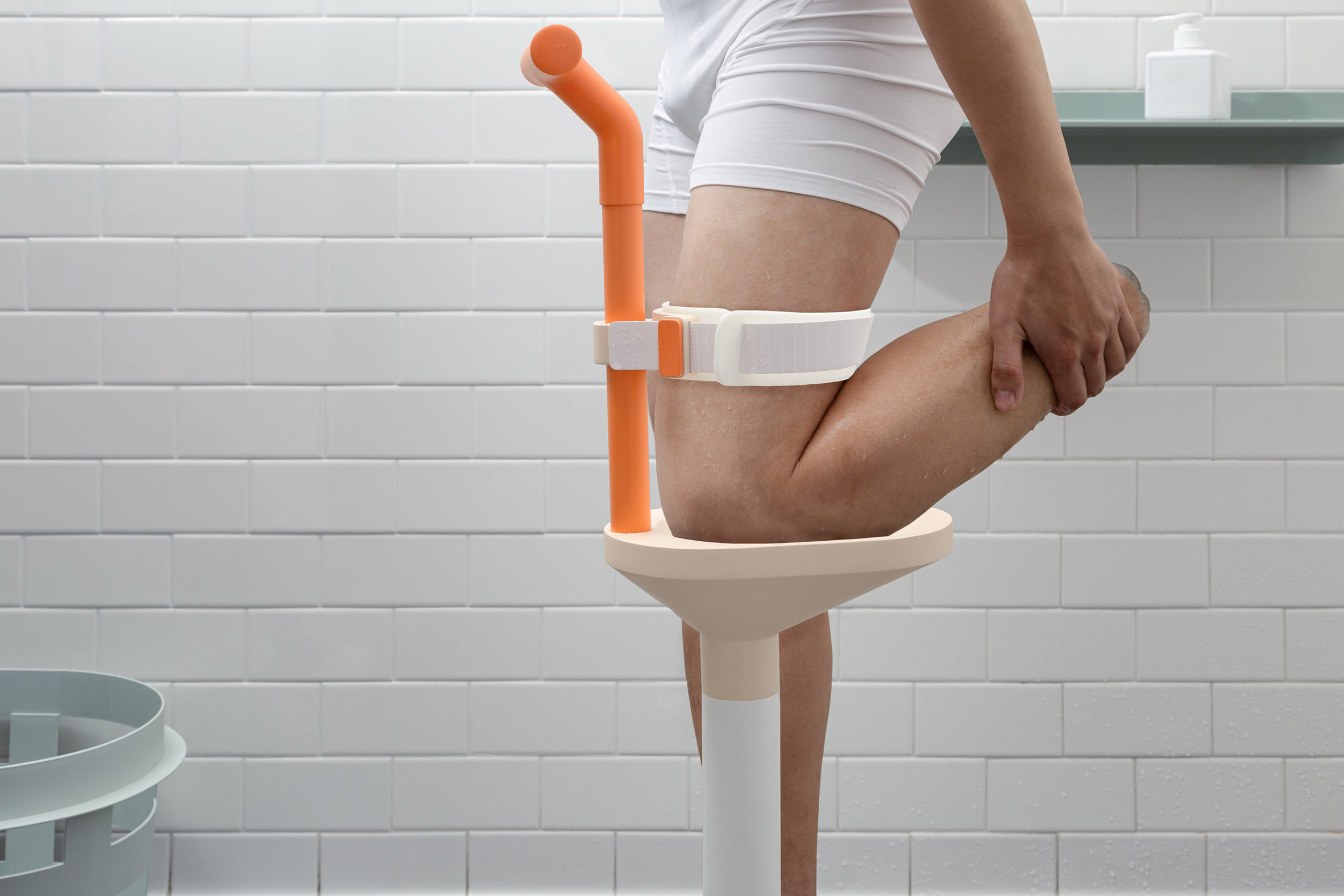
Teng came up with the idea for the project after an 80-year-old below-knee amputee named Phil allowed the designer to study his daily routine and the associated challenges as part of a research project.
"Through shadowing him, I started to realise that something many people take for granted, like showers, can be a pain point for amputees," Teng told Dezeen.
"Their current solutions when showering can be quite dangerous or troublesome. The biggest challenge is entering and exiting the shower. Some amputees must jump to get inside, others may crawl."
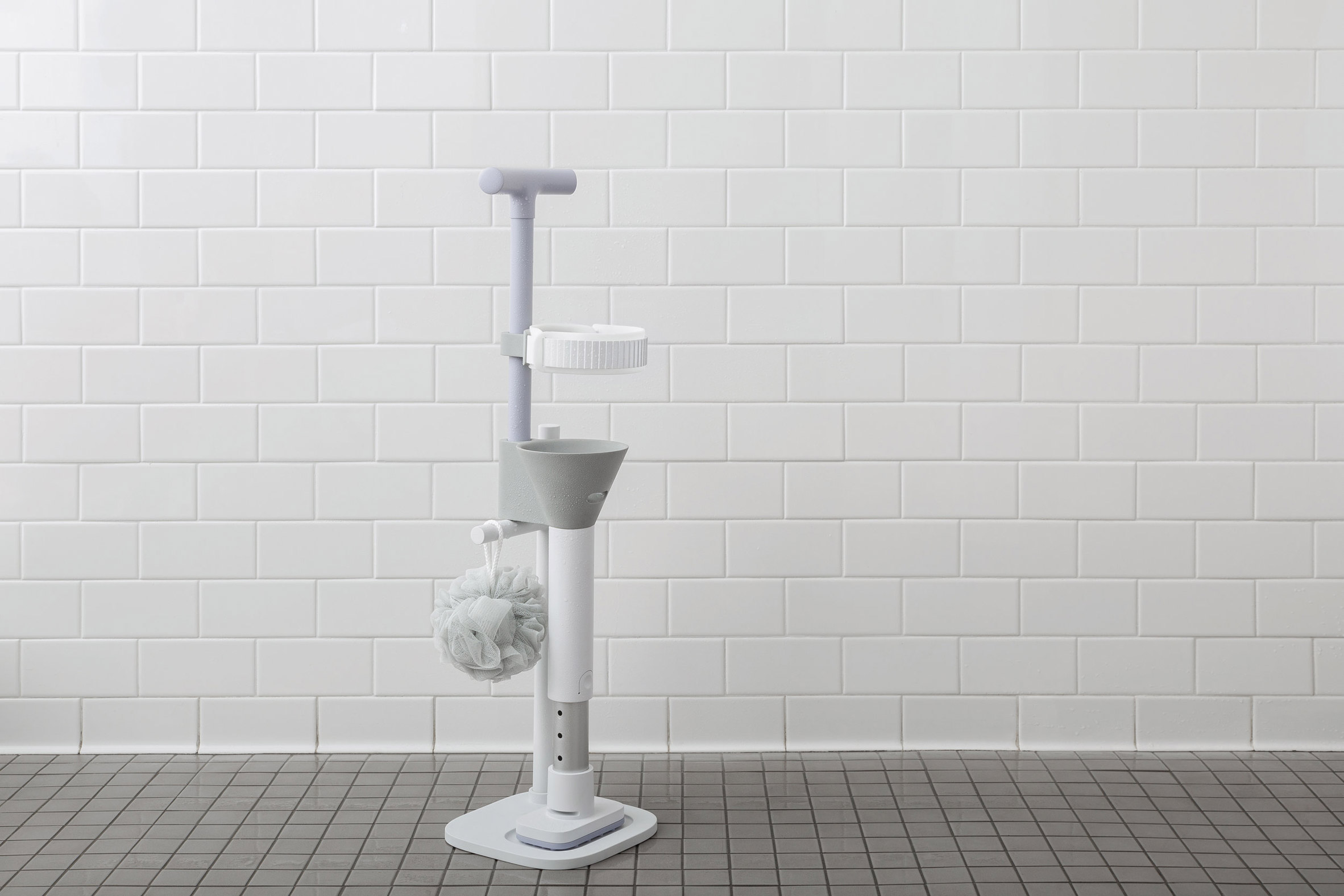
In general, prostheses come with a steep price tag as they have to be tailor-made to fit the user based on their height, weight and the shape of their residual limb.
So getting a second artificial limb fitted only for use in the shower isn't a viable option.
"Insurance only covers so much," Teng explained. "Therefore, making a shower-proof prosthetic using the same methods as a regular prosthetic wasn't enough of a solution because most people wouldn't be able to afford one anyway."
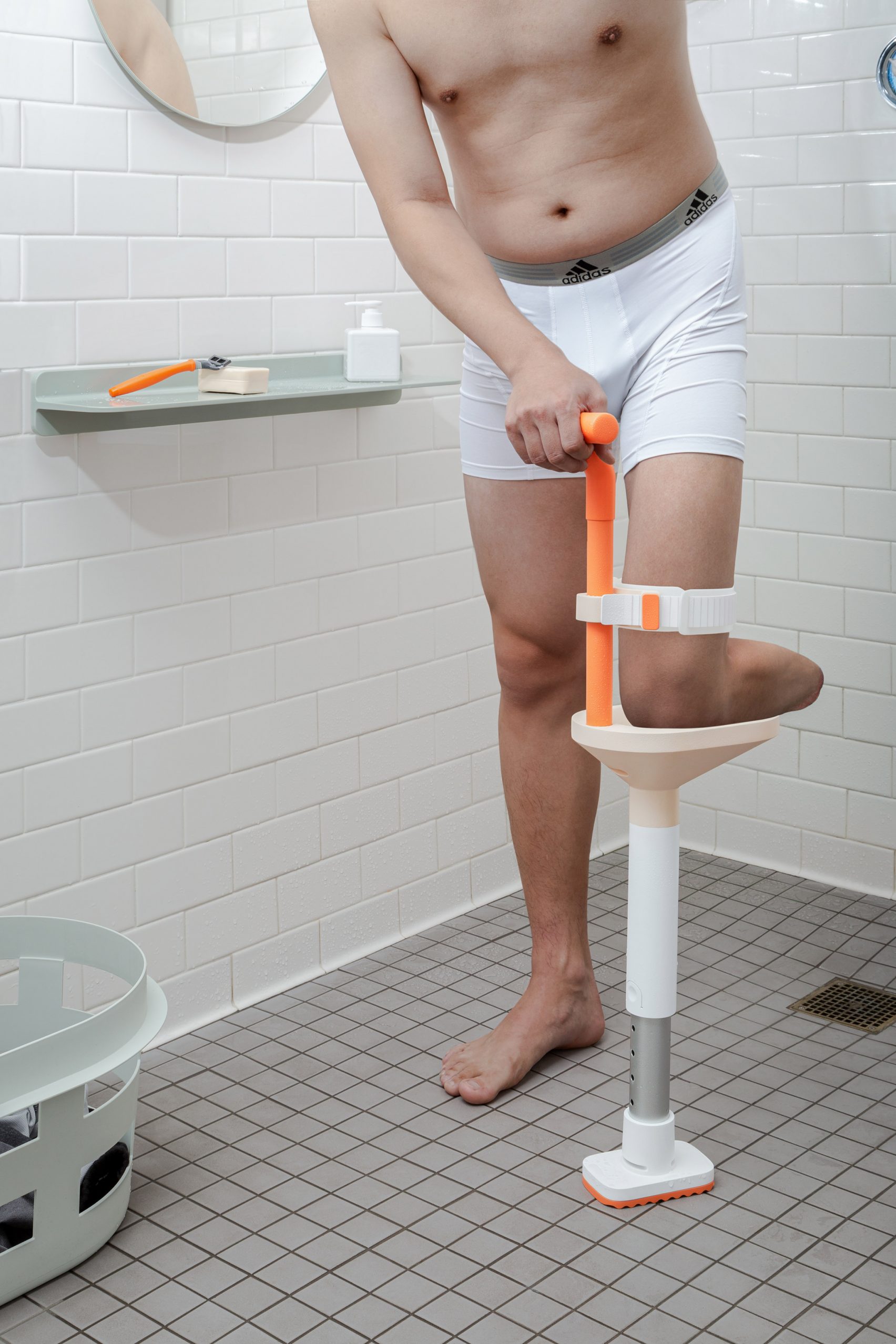
Instead, the designer worked with feedback from amputees to develop a series of modular components that can be swapped or adapted by the user to suit their body.
Lytra can be set to different heights using the stainless steel pole, while an adjustable nylon and silicone strap is fitted to the thigh to secure the prosthesis.
But the most important part is the socket, which is 3D-printed from soft-touch polyurethane and available in five sizes from extra small to extra large.
This is key because amputees' limbs can vary greatly in size and shape, which will often also change with age, temperature and the time of day.
"There are many different socket modules to accommodate below-the-knee amputees and above-the-knee amputees and the breadth of differences among residual limbs," Teng said.
Each socket also comes with a drainage hole so the residual limb can easily be rinsed with water while an interchangeable silicone insert ensures comfort and hygiene.
This is especially important for amputees post-surgery to ensure the wound doesn't become infected.
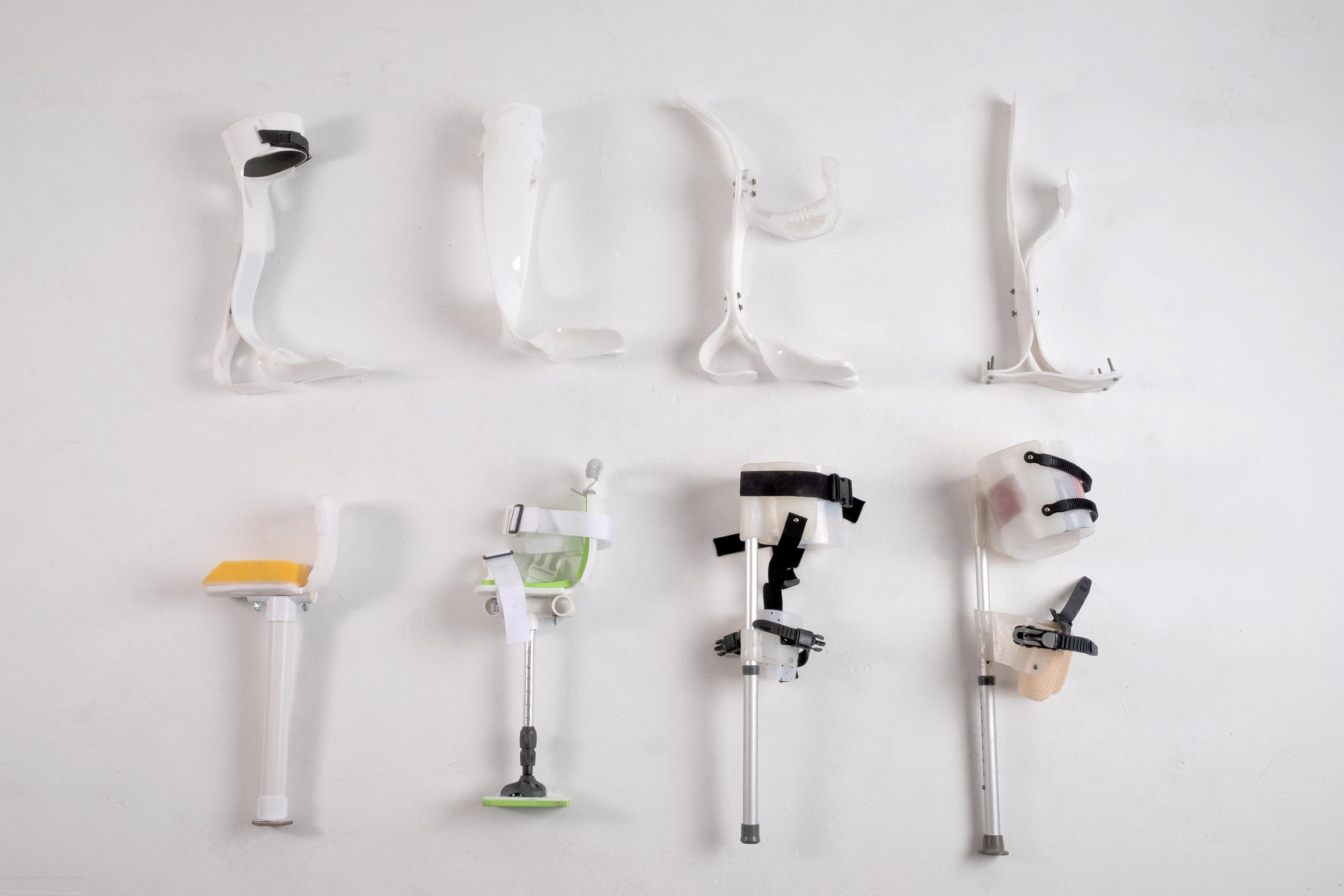
To save on cost and waste, the handgrip and the flexible foot with its textured rubber sole can also be removed and replaced when broken.
Other efforts at creating affordable prosthetics come from Kenya's Project Circleg, which creates artificial lower limbs from collected and recycled plastic, and design student Lorenzo Spreafico, who designed an arm that provides tactile feedback at a low cost.
The post Harry Teng develops "shower-proof" prosthetic leg to help amputees wash with dignity and ease appeared first on Dezeen.
